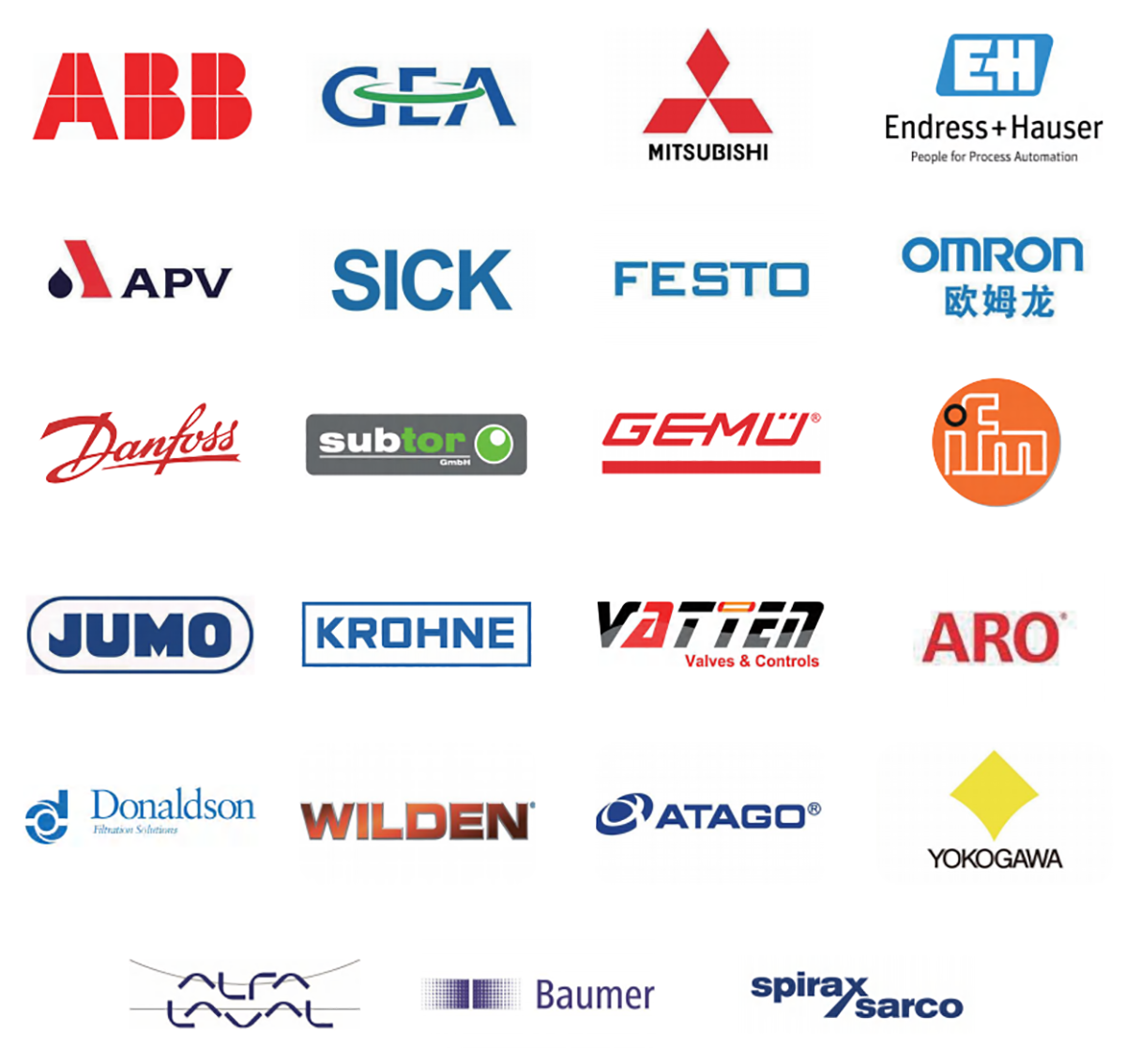Cip Cleaning System Food Processing
The CIP cleaning system is essential for maintaining high hygiene standards in food processing environments.
The CIP cleaning system(Clean in the place system) works by circulating cleaning agents—such as caustic solutions, acids, and sanitizers—through equipment to remove residues and microorganisms. This process typically involves multiple stages, including pre-rinse, detergent wash, intermediate rinse, and final rinse. Each stage is meticulously controlled to optimize cleaning performance, with key parameters like temperature, chemical concentration, and flow rate being critical.
CIP systems not only enhance cleaning efficiency but also reduce the need for manual labor, ensuring consistent and repeatable cleaning results. Their application is indispensable in industries where hygiene is paramount, such as dairy, beverage, and general food processing.
1. Independent Siemens control system and man-machine interface monitoring operating .
2. CIP cleaning liquid storage tanks (include acid tank, alkali tank, hot water tank, clear water tank);
3. Acid tank and alkali tank.
4. CIP forward pump and return self-priming pump.
5. USA ARO iaphragm pumps for acid/alkali concentrate.
6. Heat exchanger (plate or tubular type).
7. UK Spirax Sarco steam valves.
8. Germany IFM Flow Switch.
9. Germany E+H Hygienic measuring system for conductivity and concentration (optional).
CIP cleaning systems are widely used in the following food processing sectors:
1.Beverage Industry: Used for cleaning tanks, pipelines, and mixers in the production of juices, soft drinks, and alcoholic beverages.
2.Dairy Industry: Essential for cleaning milk processing equipment, ensuring the removal of residues and pathogens to prevent contamination.
3.Food Processing: Applied in cleaning systems used in producing sauces, soups, and other ready-to-eat meals.
4.Bakery Industry: Cleans mixers, storage tanks, and pipelines involved in dough and batter preparation.
5.Meat Processing: Sanitizes cutting, mixing, and packaging equipment to reduce contamination risks.
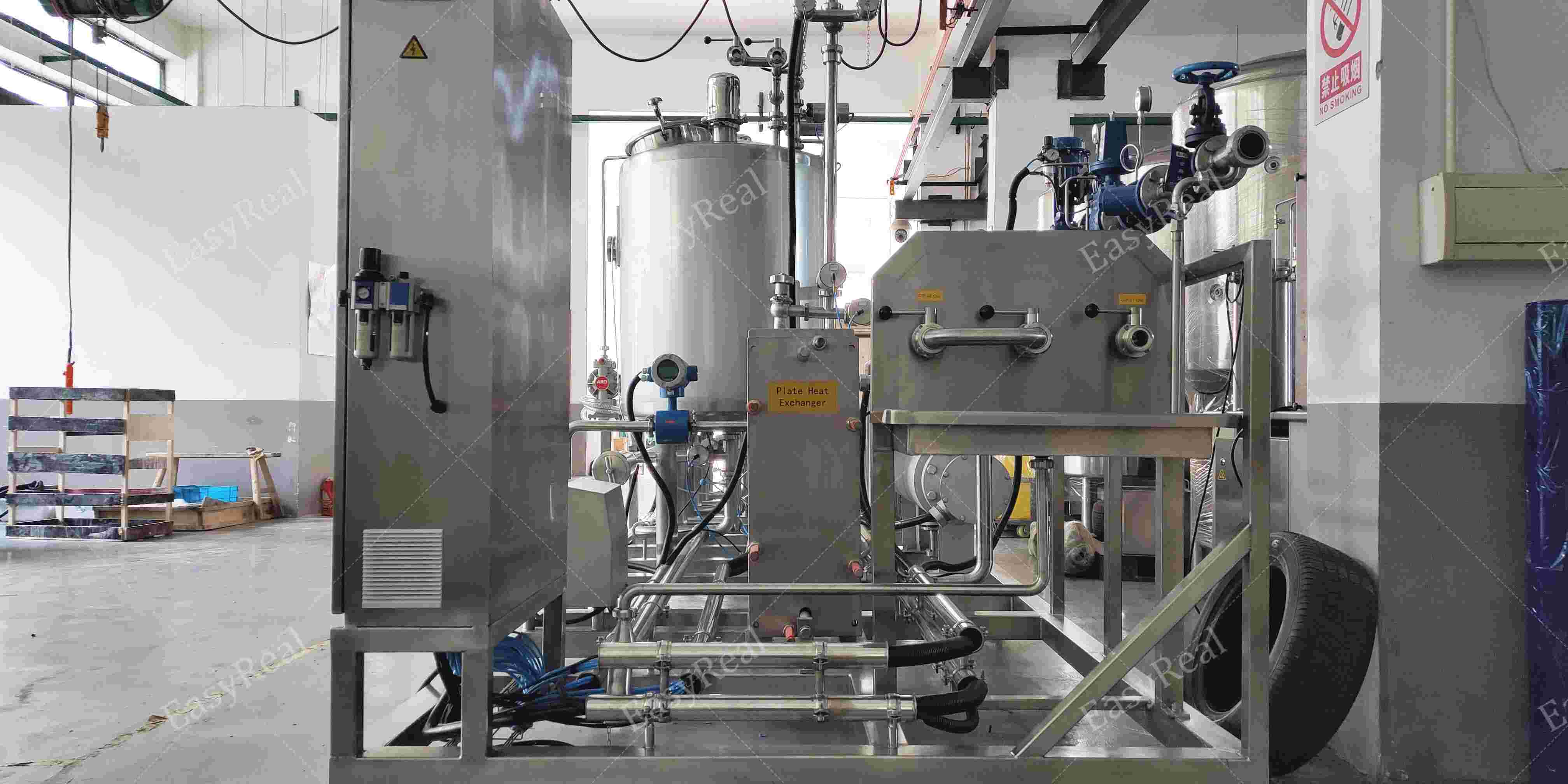
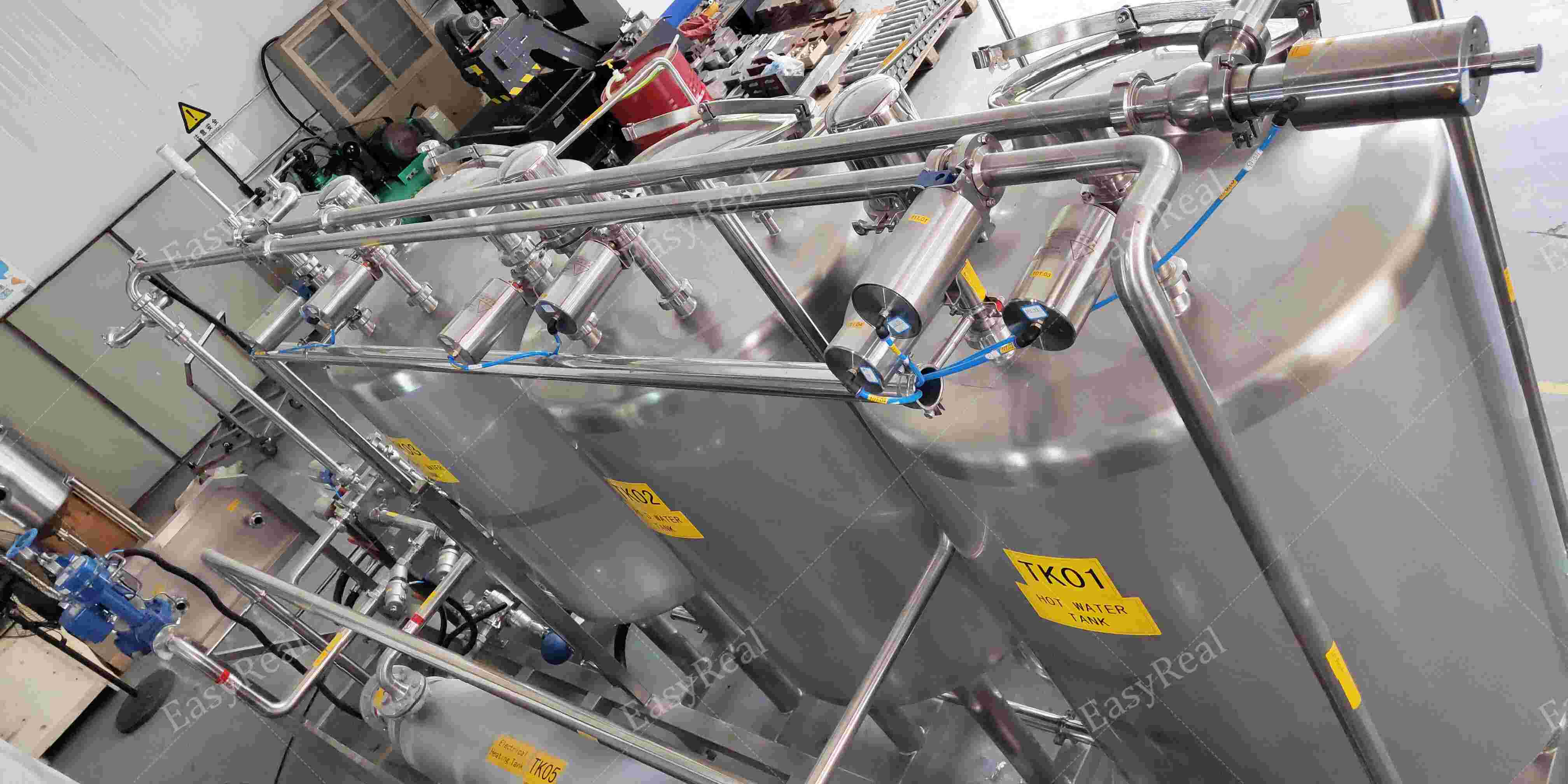
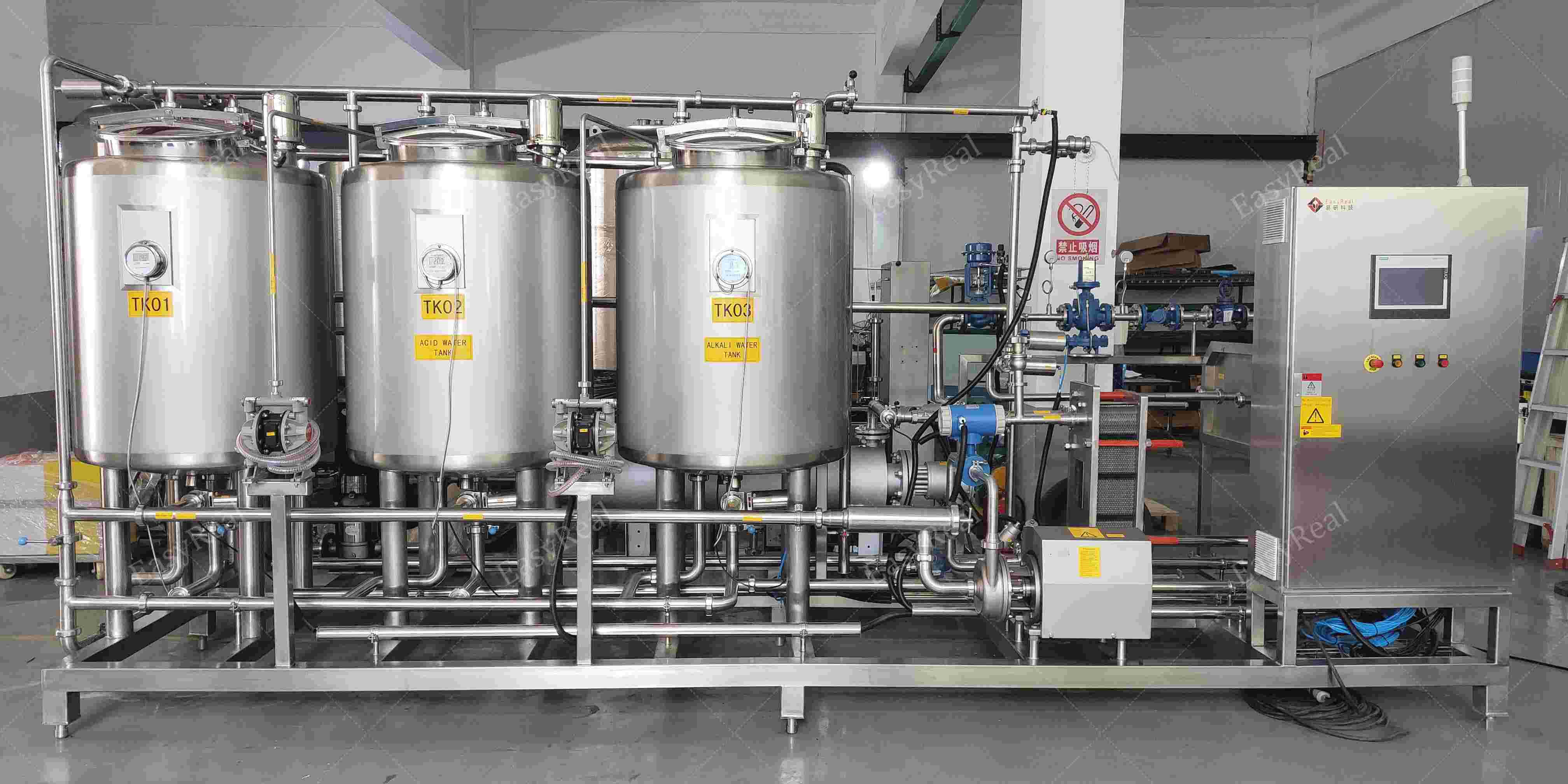
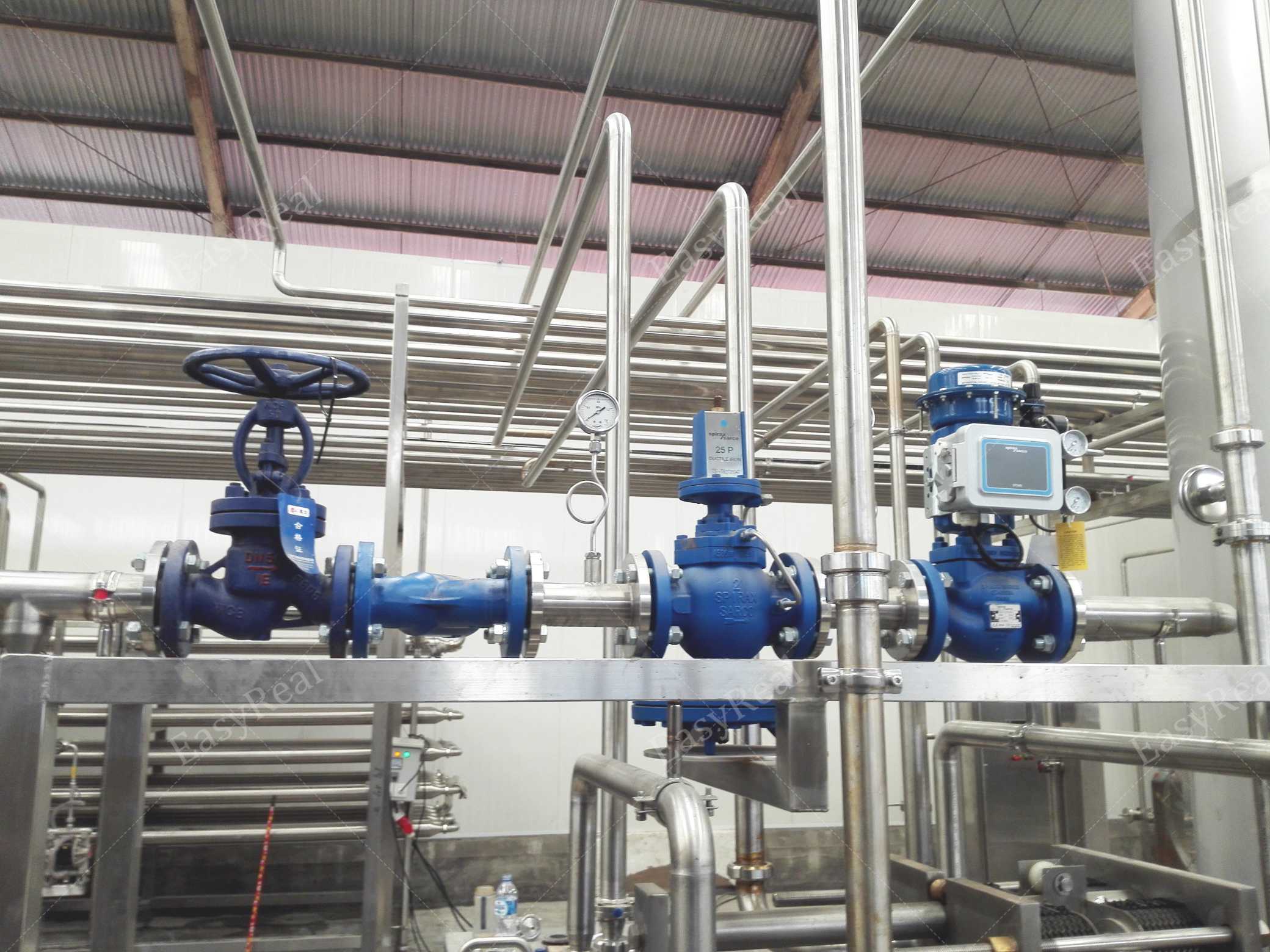
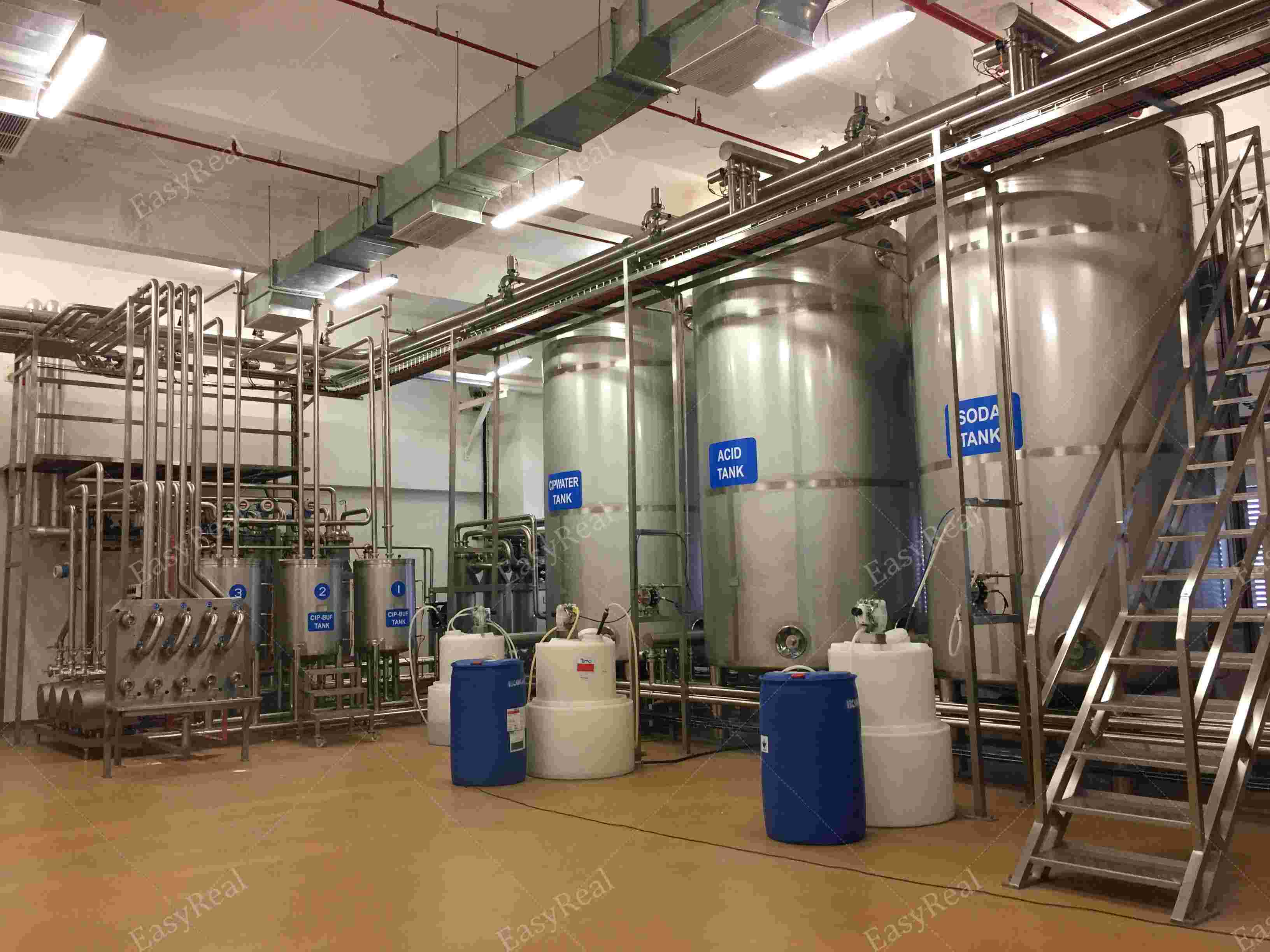
The primary components of a CIP system include:
1.Cleaning Tanks: These hold the cleaning agents like caustic and acid solutions, and so on.
2.CIP Forward Pump: Ensures the proper flow and pressure of cleaning solutions through the system.
3.Heat Exchanger: Heats the cleaning solutions to the required temperature, improving their effectiveness.
4.Spray Devices: Distribute cleaning agents throughout the equipment, ensuring all surfaces are covered.
5.Control System: Automates the cleaning process, controlling factors like temperature and chemical concentration for consistent results.
The performance of a CIP system is influenced by several factors:
1.Temperature: Higher temperatures increase the efficiency of cleaning agents by enhancing their chemical activity.
2.Flow Rate: Adequate flow rate ensures that cleaning solutions reach all areas, maintaining turbulence for effective cleaning.
3.Chemical Concentration: Proper concentration of cleaning agents is necessary to dissolve and remove residues.
4.Contact Time: Sufficient contact time between the cleaning solution and surfaces ensures thorough cleaning.
5.Mechanical Action: The physical force of the cleaning solution aids in removing stubborn residues.
The CIP system operates by circulating cleaning solutions through the equipment that needs to be cleaned.
The process typically starts with a pre-rinse to remove loose debris, followed by a detergent wash that breaks down organic materials. After an intermediate rinse, an acid rinse is applied to remove mineral deposits. A final rinse with water ensures that all cleaning agents are removed, leaving the equipment sanitized and ready for the next production cycle.
Automation in CIP systems allows for precise control over each step, ensuring optimal cleaning performance and resource efficiency.
Choosing EasyReal's CIP systems for food processing ensures superior cleaning performance, compliance with strict hygiene standards, and reduced operational costs.
EasyReal’s CIP Cleaning systems are customizable to meet the specific needs of your production line, offering advanced automation that minimizes manual intervention while guaranteeing consistent, high-quality cleaning results. Additionally, our CIP systems are designed to be environmentally friendly, optimizing water and chemical usage and minimizing waste.
EasyReal is the professional manufacturer that has obtained CE certification, ISO9001 quality certification, and SGS certification, and more than 40+ independent intellectual property rights are occupied.
Trust EasyReal to enhance your production efficiency and maintain the highest levels of food safety!
